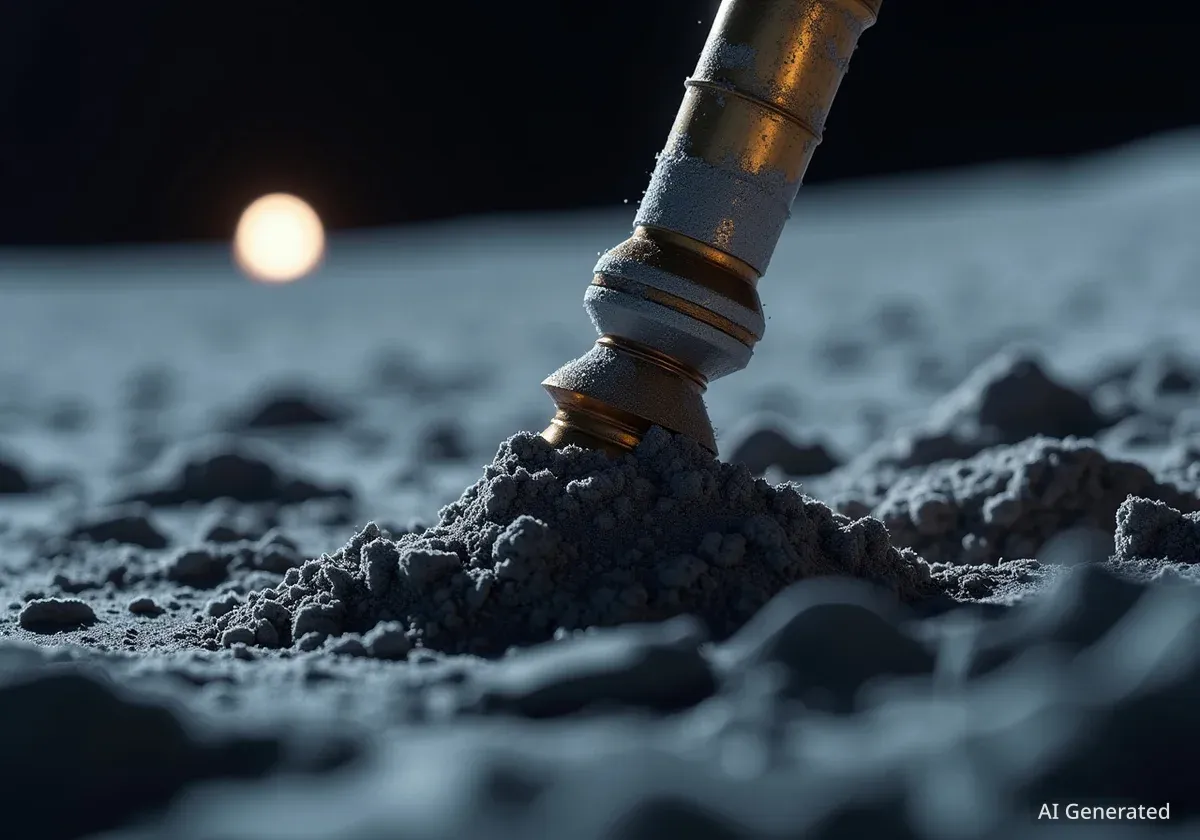Recent American missions to the moon have successfully landed, marking a return to the lunar surface after decades. However, these commercial landers have been unable to survive their first lunar night, a brutal 14-day period of extreme cold and darkness. During this time, temperatures plummet to nearly minus 300 degrees Fahrenheit, rendering solar panels useless and freezing vital electronics.
In stark contrast, China's lunar missions have demonstrated remarkable longevity. By utilizing nuclear power sources, Chinese landers have remained operational for years, raising strategic questions about the United States' long-term capabilities in the new space race.
Key Takeaways
- Recent U.S. commercial lunar landers ceased operations within two weeks, unable to survive the 14-day lunar night.
- China has successfully used radioisotope power systems (nuclear batteries) since 2013, with its Chang’e-4 lander operating for over five years.
- Experts warn that without nuclear power, the U.S. risks falling behind in establishing a permanent lunar presence.
- While NASA plans a fission reactor for 2030, a faster deployment of nuclear batteries is being advocated to close the gap.
The Challenge of the Lunar Night
Surviving on the moon is not just about landing; it's about endurance. The primary obstacle is the lunar night, a period equivalent to 14 Earth days where the sun does not shine on the landing site. Without sunlight, solar-powered equipment cannot generate electricity, and the extreme cold threatens to permanently damage sensitive systems.
The three U.S. commercial landers that reached the moon in 2024 and 2025 completed their initial missions but were not equipped for these harsh conditions. Their power systems drained, and they effectively froze to death, silencing their communications with Earth.
Lunar Night by the Numbers
- Duration: Approximately 14 Earth days
- Temperature: Drops to nearly -300°F (-184°C)
- Impact: No solar power generation, batteries drain, electronics freeze
China's Nuclear Advantage
While the U.S. grapples with night survival, China has already solved the problem. Since 2013, its lunar missions have incorporated radioisotope power systems, essentially nuclear batteries that provide a steady stream of heat and electricity, independent of sunlight.
This technology has allowed the Chang’e-4 lander, which touched down on the far side of the moon, to operate continuously for more than 2,400 days. This sustained presence provides a significant scientific and strategic advantage. China is now planning its Chang’e 8 mission for 2028, which will test resource extraction at the moon's south pole—a critical step toward building a permanent lunar base.
A Strategic Challenge
A recent assessment by the Commercial Space Federation highlighted the strategic implications of China's progress. The report noted that China's development of super-heavy lift vehicles, autonomous resource utilization, and lunar nuclear power presents a direct challenge to the technological leadership of the United States in space.
The American Response: A Race Against Time
NASA is not ignoring the need for lunar nuclear power. The agency's Fission Surface Power (FSP) program is developing a small fission reactor designed to provide continuous power for future Artemis missions. The goal is to have this reactor operational on the moon by 2030.
However, many in the aerospace industry believe waiting until 2030 is too long. They argue that China's consistent progress demands a more urgent response. The U.S. Department of Energy recently released a report echoing this sentiment.
“The United States cannot afford to delay while others shape the rules of the road and claim first-mover advantage,” the report stated, emphasizing the urgency of deploying nuclear systems.
A Faster, Near-Term Solution
Industry leaders propose a faster, complementary approach: deploying smaller nuclear batteries, similar to what China uses, on upcoming missions. Thanks to significant private investment alongside government funding, the technology is mature. Prototypes have been successfully demonstrated, fuel sources are secured, and the necessary facilities are in place.
Experts suggest that through the existing Commercial Lunar Payload Services (CLPS) program—a partnership between NASA and private companies—a nuclear battery could be landed on the moon within the next two years. This would provide an immediate survive-the-night capability, de-risking larger projects like the FSP reactor and allowing science missions to operate for years instead of weeks.
Why Staying on the Moon Matters
The new space race is not about planting a flag; it's about establishing a persistent presence. Staying on the moon allows for long-term scientific research, the establishment of distributed science networks, and the crucial testing of resource utilization technologies.
These capabilities are essential for future ambitions, including missions to Mars. Key lunar resources that require sustained power to extract include:
- Water ice: Can be converted into breathable air and rocket fuel.
- Metals: Can be used for in-space construction.
- Helium-3: A potential fuel for future nuclear fusion reactors.
Ultimately, the ability to operate continuously through the lunar night is the foundation for all future lunar development. Without it, the U.S. risks ceding a strategic foothold on the moon to nations that have already mastered the technology for long-term survival. The contest is no longer about who gets there first, but who has the power to stay.





